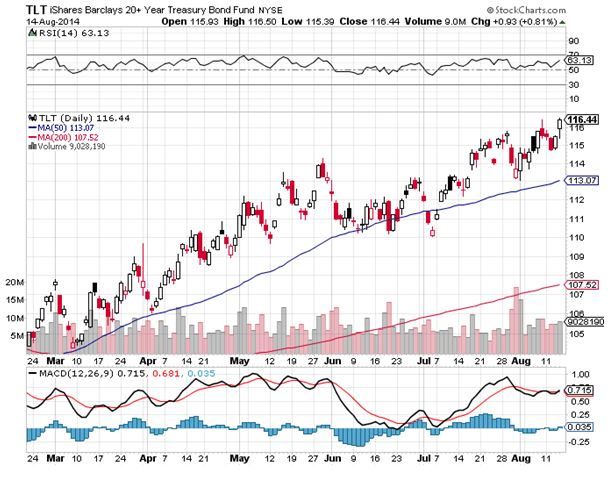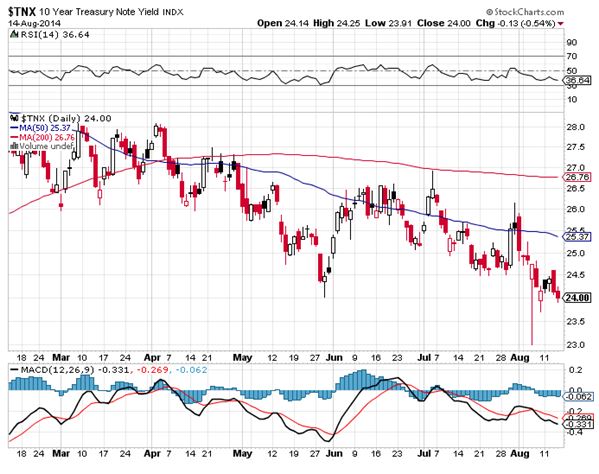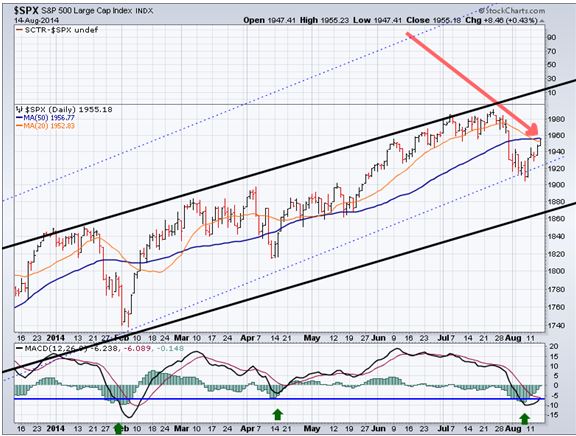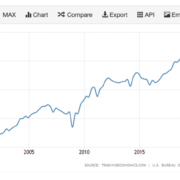Bonds or Stocks: Who?s Right?
Treasury bonds spike to new one year highs, closing at a 2.40% yield, and trading as low as a 2.30% yield in the overnight market at one point last week. Clearly, serious deflation is continuing for the indefinite future.
Buy more bonds!
US corporate profits are at all time highs, just closing one of the strongest reporting periods in history. What?s more, the outlook they painted for the rest of the year is rosy. With dividend yields for many shares in excess of interest rates paid by government bonds, the bull market is alive and well.
Buy more stocks!
Stocks! Bonds! Stocks! Bonds! Which group of talking heads is right? The stock bulls or the bond bulls?
Yikes! What is a poor money manager to do?
Here is the certain answer to your plaintive question: They are both right.
So how does one deal with this dilemma? It?s easy. You buy everything, both stocks and bonds. That has been the judgment of the markets, which have sent both bonds and stocks flying in tandem for most of 2014.
How is this possible? Doesn?t this violate Economics 101? Should I take my copies of Paul Samuelson and Graham & Dodd and sell them on Ebay?
Not really.
Here is the explanation for it all. The world is now facing a cash glut unprecedented in history. There is so much money chasing everything these days, it is truly unbelievable for those of us rather long in the tooth. Prices can only go northward, whatever they are for.
Take a look at the U.S. government?s accounts, and you get a partial explanation. Over the past four years, the budget deficit has nearly vaporized, from a stratospheric $1.6 trillion to only $600 billion. Next year, $300 billion is in the cards.
This has caused the Treasury to massively cut back on new issuance. In fact, some recent government bond auctions have faced an outright shortage of bonds, prompting bid prices to spike.
The incredible thing is that this has been happening in the face of the Federal Reserve?s winding down of quantitative easing. By October, it will have removed $80 billion a month in bond buying to zero. Imagine how low rates would be by now if my friend, Fed governor Janet Yellen, had kept it going.
This is why virtually everyone in the world got the bond market wrong this year, calling for a swan dive, except for bond maven and hedge fund guru, Jeffrey Gundlach. I include myself in this category of errant prognosticators.
However, I still have a chance to be right. I expect bonds to give up all of their gains going into yearend, ending dead unchanged on the year with 10 year Treasuries showing a 3.0% yield. Improving US growth prospects is the reason.
In my New Year forecast (click here for my ?2014 Annual Asset Review?)
I expected bonds to be weak, but not fall below a 3.50% yield. I was in a small minority of strategists who called for such a small decline in Treasuries. If I am right, and yields retrace to 3.0%, I will only be 50 basis points off my target, which is better than most.
But that is not to say that 10-year yields won?t first spike to 2.25% first, which happens to be Gundlach?s personal target.
I am a guy who puts his money where his mouth is, who eats his own cooking, and wears his opinions on his sleeve. So, I have been shorting bonds for all of this year.
But my trading approach is so forgiving, using price spikes to buy out of the money-put-spreads, that my followers have had more than adequate room to get profitably in and out.
Every single trade was either a winner, or broke even, except for one, adding an eye popping 10.61% to my 28% profit for 2014. It has been my most profitable trade this year.
While I have been dead wrong with the trend, I have been erring so slowly that we were able to coin it almost every month. Such is the forgiveness of the options spread strategy.
Physicists like ?unified theories? that explain everything, be they the movement of single electrons around nuclei, or galaxies in the universe. Here is a nice unified theory of everything for your investments: technology is curing all.
Hyper accelerating technology means that the price of things is falling faster than anyone believes. That means inflation stays at bay forever, which is great for bonds.
Technology is also reducing the cost, and even the need for labor by business. That is also disinflationary, and helps generate ever rising corporate profits, which is wonderful for stocks.
It all sounds like a ?buy stocks and bonds? explanation to me.
It reinforces the ?Golden Age? scenario for the 2020?s that I have been harping about all year, when the last impediment for growth, demographics, shifts from a headwind to a tailwind. That is when risk assets really go ballistic.
Maybe Google?s Ray Kurzweil is right? (click here for ?Peeking into the Future with Ray Kurzweil).








